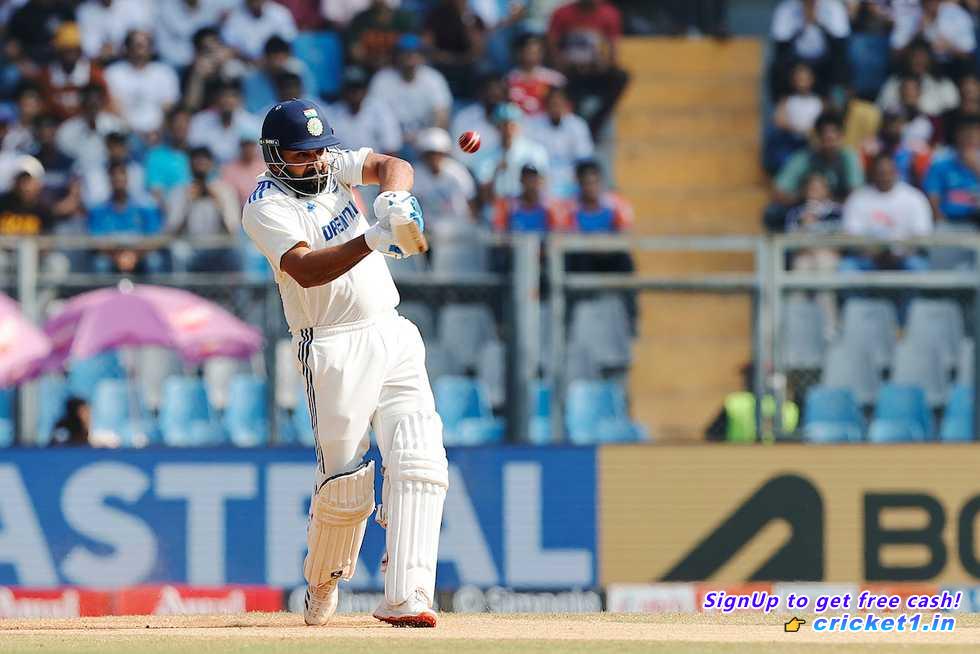
In a startling turn of events, the Indian cricket team has found itself grappling with an unexpected 3-0 series defeat at the hands of New Zealand, marking the first time in 130 years that India has been whitewashed on home soil. The series, which unfolded across multiple venues including Bengaluru, Pune, and Mumbai, has left the Indian team searching for answers and solutions to the challenges they faced. Initially, they attributed their loss in Bengaluru to the adverse weather conditions and the decision at the toss. However, as the series progressed, these explanations gave way to a realization that there were deeper issues at play.
In Pune, India’s batting lineup admitted to struggling against New Zealand’s spin attack, exemplified by Mitchell Santner. They acknowledged the need for executing more sweeps and reverse sweeps to counter the bowlers, yet found themselves unable to change the outcome. By the time they arrived in Mumbai, the Indian team had run out of excuses and faced a harsh reality. Their efforts, including the much-discussed sweeps and reverse sweeps, ultimately proved futile, leading to another comprehensive defeat. This surprising series result could no longer be dismissed as a rare anomaly, occurring only once in over a decade. Instead, it emphasized New Zealand’s dominance and India’s inability to hold its own.
One of the pressing questions emerging from this series is India’s choice of a highly aggressive batting approach, which often backfired amidst challenging conditions. The aggressive tactics, embraced by the team since their performance in Kanpur 2024, came under scrutiny. Captain Rohit Sharma, at the forefront of this approach, faced criticism for playing risky shots on difficult pitches. Rohit’s performance throughout the year raised concerns, with his average dropping to its lowest since he began opening in Test cricket in 2019. Curiously, this decline coincided with his best year in T20 cricket, highlighting a puzzling divergence in form across formats.
Rohit admitted to not spending enough time on the crease in defense, leading to a loss of rhythm. He voiced his intention to reassess his game and find ways to improve, recognizing that evolving as a batter carries the risk of missteps. The series defeat prompted introspection, as team management explored the balance between aggressive and cautious strategies in Test cricket.
. New Zealand captain Tom Latham’s approach, favoring survival and defense, illustrated an alternative mindset that could thrive amidst tough playing conditions.
Another pertinent question revolves around India’s choice of playing on turning pitches, a strategy that backfired against New Zealand. Rohit explained that pitch selection varied from series to series, acknowledging that this time it did not yield the desired results. The defeat has cast a shadow on India’s path to the World Test Championship (WTC) finals, adding pressure on the team to perform flawlessly in their upcoming series against Australia. The series against New Zealand was crucial for India’s WTC points tally, but the unexpected outcome left them with no room for error down under.
The series also highlighted India’s struggles to make definitive decisions regarding their bowling line-up, particularly in the pace department. The reliance on spinner-friendly conditions meant that the pace bowlers had limited opportunities to showcase their skills. Heading into Australia, clarity regarding the pecking order among the pacers is imperative, especially with Jasprit Bumrah’s absence in the final Test against New Zealand.
For stalwarts like Rohit Sharma and Virat Kohli, this series defeat has left a blemish on their illustrious careers. Having enjoyed recent success with an ICC title win, this series defeat serves as a stark reminder of the unpredictable nature of cricket. Kohli’s form has been under the spotlight, as he struggled to replicate his past dominance. Despite changes in stance and extensive practice sessions, he found it challenging to deliver significant performances.
Rohit candidly acknowledged the lows that accompany cricketing highs, recognizing the unique pressures of leadership. As captain, he accepted responsibility for the team’s performance and emphasized the need for self-reflection and improvement. The discussions ahead, he hinted, would revolve around tackling the mistakes made during the series and identifying areas for growth.
India now faces the daunting task of rebuilding and regrouping ahead of their series in Australia. The road to the World Test Championship final is fraught with challenges, but the lessons from this humbling experience could prove instrumental in shaping India’s future approach to Test cricket. The cricketing world will be watching closely as India embarks on this journey of introspection and evolution.

